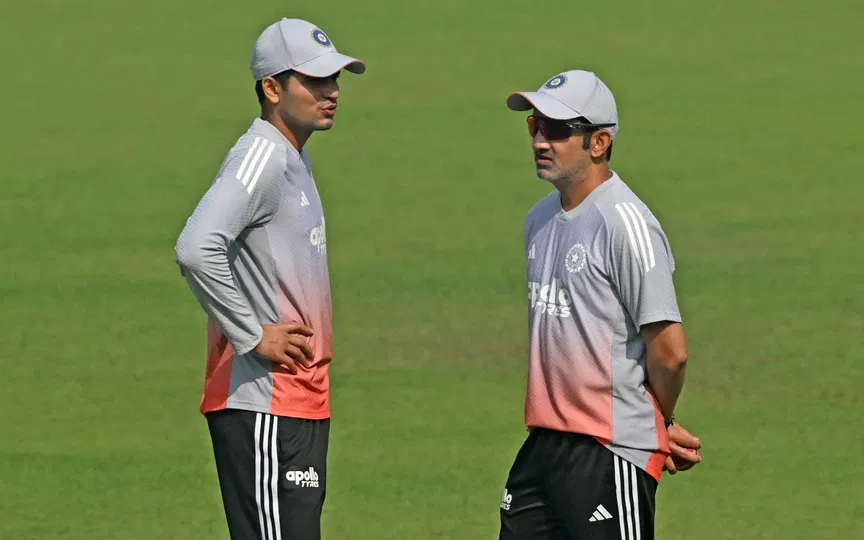![Eden Gardens cricket stadium [Source: @BCCI/X.com]](https://onecricketnews.akamaized.net/parth-editor/oc-dashboard/news-images-prod/1763389729987_State_Test_Cricket78.jpg?type=hq) Eden Gardens cricket stadium [Source: @BCCI/X.com]
Eden Gardens cricket stadium [Source: @BCCI/X.com]
After the three-day wrap-up of IND vs SA 1st Test at Eden Gardens, questions are thrown out in the open. What is wrong with the Indian test cricket team at home, and is it in their best interest to make 'turnado' pitches just for the sake of sabotaging the opponent while the home team gets engulfed in the trap too?
The short and not-so-sweet stumble of India against the visitors in Kolkata opens up a big book of India's struggle at home in recent years.
India's backfiring strategy at home
Over the last decade, India has been rocky with their preferences for home pitches, but that saw them come up in winning colours against South Africa by 3-0, where two of those matches were played on rank turners. However, that block was built on pitches that allowed for big totals for both sides, unlike the recent uneven, turning tracks.
Later, in Chennai in 2021, India began to sway away from their initial plan for rank-turning tracks. When England secured a massive win against the hosts in Chennai in 2021, the curators were instructed to get down to pitches, which were movementless on the first day but offered sharp, quick turns on the next few days.
After this incident, India was more keen on having turning pitches at home to restrict that flow of runs that would stifle opponents from getting sizeable totals.
This strategic pivot, however, has created a dangerous paradox. By crafting pitches designed to tackle strong opposition, India has unwillingly elevated the importance of the toss to a terrifying degree.
The toss paradox and pitch factor in the forefront
India has now lost its last three home Tests on such pitches, against New Zealand in Pune and Mumbai last year, and now against South Africa in Kolkata. Crucially, they lost the toss in all three and had to bat last each time. The plan to negate the toss has, in practice, handed the opposition a potential match-winning advantage simply by calling correctly.
The thread of this philosophy runs directly from MS Dhoni in 2012 to Gautam Gambhir today. After a draw on a flat Ahmedabad pitch against England, Dhoni famously lamented, "I don't even want to see this wicket." He demanded pitches that turned from the start.
Gambhir’s post-Kolkata comments were an echo. "We have always said we want turning wickets where the ball turns a little on day one so that the toss doesn't become an important factor," he asserted, despite the 30-run loss.
The apparent degradation of Test Cricket is imminent?
This confrontational approach to pitch curation is not an isolated Indian phenomenon. It is a microcosm of a global trend that is squeezing the life out of Test cricket. The year 2025 has seen a worrying increase in matches that end well inside three days, not due to magnificent skill, but due to premeditated pitch preparation that borders on sabotage.
From green tops in England and New Zealand that make seam bowling a lottery, to the subcontinent's "turnados," the goal is the same, exploit home advantage to such an extreme that the opponent's quality is neutralised. The result is a condensed, often chaotic, form of Test cricket in India that sacrifices narrative, endurance, and spectacle for a potentially hollow victory/defeat.
India's obsession with turning tracks is ratting themselves out
The fundamental question is whether this is a sustainable path. In respecting their opposition a little too much, India may be underestimating itself. They possess one of the most complete bowling attacks in the world, capable of winning on any surface.
Jasprit Bumrah and Kuldeep Yadav are the world's premier wicket-takers in neutral conditions. Mohammed Siraj is a relentless force, and in Ravindra Jadeja, they have an all-time great all-rounder. This is an attack that did not need a Kolkata-style trap to defeat a South African side missing its best fast bowler, Kagiso Rabada.
Pitches should not be the antagonist at play
Nevertheless, the big question is what will be the state of Test cricket in India standing at the end of 2025?
Necessarily, India is building traps that snap shut on their own fingers. The state of Test cricket in 2025 is thus at a crossroads, caught between the desire for home dominance and the need for a contest that celebrates the game's truer depth.
The pitch, meant to be a stage for the battle, has instead become the main antagonist, and the biggest questions are now being asked not of the players, but of the very ground beneath their feet.



 (1).jpg?type=mq)
.jpg?type=mq)

